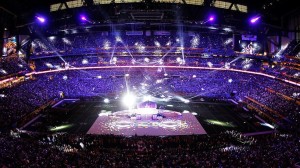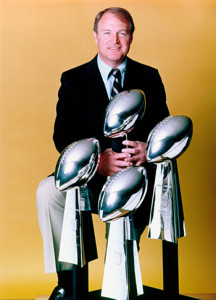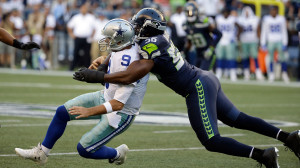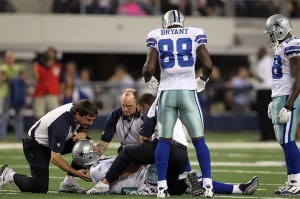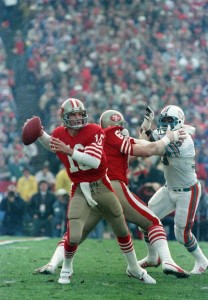Posted on
February 06, 2016 by
Dean Hybl
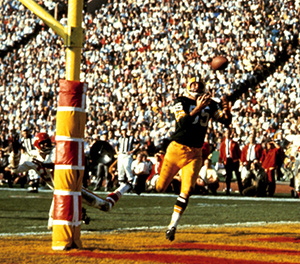
Max McGee caught more passes in Super Bowl I than he did during the entire 1966 season.
Sunday’s Super Bowl will feature a budding star quarterbacking one squad and an aged gunslinger likely facing his final showdown on the other. While we tend to focus on Cam Newton and Peyton Manning, the reality is that victory in the Super Bowl will likely hinge on the performance of someone far less known than either starting quarterback.
Super Bowl history includes a mixture of Hall of Fame players rising to the occasion on the biggest stage of the game and second tier players who picked the Super Bowl to have a career day.
This article marks part two of our look at the top 50 individual offensive performances in Super Bowl history. Of the 50 performances picked for the list, 32 were by players who either are in the Hall of Fame or should realistically expect to receive a bust in Canton at some point. However, when you look at the “best of the best” performances, 19 of the top 25 were by players who are Hall of Fame caliber.
Here is a look at our picks for the 25 best individual offensive performances in Super Bowl history. For this list we looked at statistics, but also considered game situations. That is why the Super Bowl where Joe Montana threw 5 touchdowns was highlighted in the first look at performances 50-26, but his most clutch performance is featured here. We did take into account whether the team won the game, but did not give any weight to who won the game MVP Award as there have been many occasions where you can scratch your head at who received that award.
Be sure to check out part 1 with numbers 50-26. I welcome your comments or ideas as to which performances you think should be on this list.
25. Max McGee – Green Bay Packers – Super Bowl I – 7 rec., 138 yards, 2 TD
It was no surprise that the Green Bay Packers defeated the Kansas City Chiefs in the first Super Bowl, but it was quite a shocker that one of the stars of the game was aging wide receiver Max McGee. Having caught just four passes in limited action during the season, McGee expected his biggest score of the weekend to be when he broke curfew the night before the game. Yet, after Boyd Dowler suffered a broken collar bone in the first minutes, McGee made history by scoring the first touchdown in Super Bowl history.
24. Kurt Warner – St. Louis Rams – Super Bowl XXXIV – 24-45, 414 yards, 2 TD, 0 INT
Before the 1999 season Kurt Warner had thrown all of 11 passes in the NFL. In Super Bowl XXXIV he threw the ball 45 times for 414 yards (still the single game Super Bowl record) to lead the Rams to a 23-16 victory over the Tennessee Titans. The Rams marched up and down the field, but were held to just three field goals in the first half and the Titans came all the way back to tie the score at 16. Warner then connected with Isaac Bruce for a 73-yard touchdown that proved to be the game winner.
23. Eli Manning – New York Giants – Super Bowl XLVI – 30-40, 296 yards, 1TD, 0 INT
With his team trailing 17-9 after the New England Patriots scored on the first drive of the second half, Eli Manning completed 17 of 23 passes for 176 yards to lift the New York Giants to their second Super Bowl victory over the Patriots in five years. He was especially impressive when marching the Giants down for the game-winning touchdown as he completed five of six passes for 74 yards.
22. John Elway – Denver Broncos – Super Bowl XXXIII – 18-29, 336 yards, 1TD, 1INT; 1 rushing TD
In his final NFL game, John Elway went out in style by passing for 336 yards and a touchdown and scoring another touchdown on the ground as the Broncos won their second straight Super Bowl. The Broncos seized control early with Elway’s 80-yard touchdown pass to Rod Smith giving them a 17-3 lead. Read the rest of this entry →
